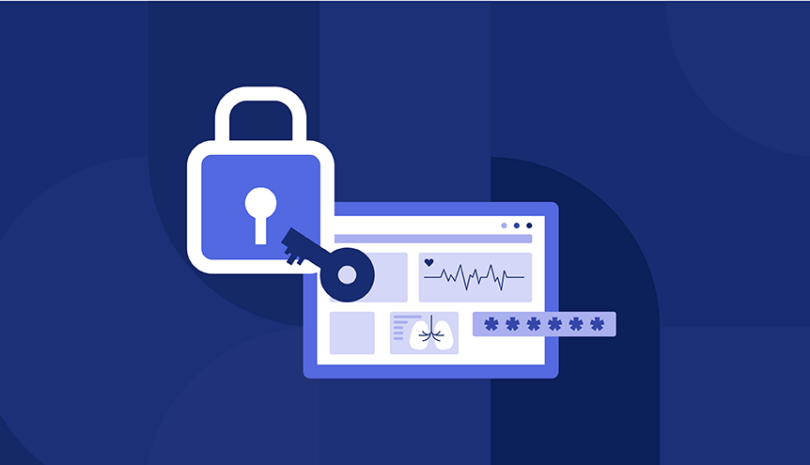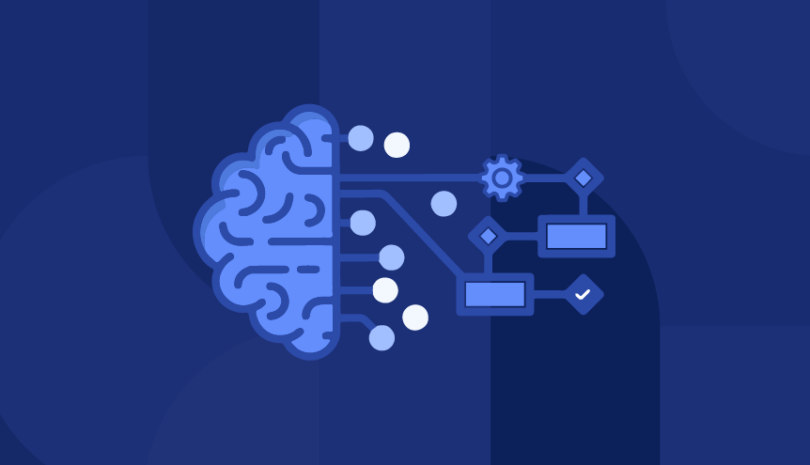In today’s connected world, no business exists in a vacuum. Surrounding every company is a satellite network of third parties that provide vital IT support, analytics, consultancy, and more. But third parties also bring a range of risks, especially cyber risk, compliance risk, and disruption to business operations.
Additionally, each third party has its own network of third parties. This creates concentric circles of risk that are constantly changing as partnerships dissolve and reform, new threats emerge, and regulations evolve.
With so many moving parts, a one-time static assessment of third-party risk is no longer sufficient. Continuous risk monitoring is vital to identify and mitigate cybersecurity risks and maintain compliance.
In this article, we’ll explain why continuous risk monitoring is crucial for effective third-party risk management (TPRM) today, and share key components and best practices for implementing it efficiently.
The Evolution of Third-Party Risk Management
Once upon a time, third-party networks were limited, supply chains were more localized, and threats evolved relatively slowly. Enterprises could rely on one-time vendor assessments, static checklists, and manual audits to assess third-party risks, re-evaluating vendors periodically and taking a reactive approach to risk management.
But as supply chains became more complex, with multiple layers of third- and fourth-party vendors, traditional methods were no longer effective. Globalized supply chains mean risks can arise rapidly from any vector, requiring a more proactive and continuous attitude to TPRM. The widespread transition to cloud infrastructure and SaaS solutions makes it more challenging to maintain control over and visibility into data security.
At the same time, enterprises face new and evolving threats that extend their attack surface. Cyber attacks are more sophisticated and more frequent, and regulations have become stricter. Standards like GDPR and NIST require robust TPRM. The only way to keep pace with the new circumstances is to adopt advanced technologies that can deliver continuous monitoring, real-time insights, and swift risk mitigation.
Why Continuous Risk Monitoring Matters in TPRM
Reliable TPRM requires continuous risk monitoring that delivers real-time insights into changing third-party risk posture. Periodic reviews can leave significant gaps in risk assessment, but non-stop monitoring brings full visibility into your vendors’ security practices and potential vulnerabilities.
As the threat landscape evolves, new vulnerabilities and attack vectors can arise unexpectedly. Continuous monitoring ensures that you’re aware of these new threats and can adjust your defenses and risk management strategies accordingly. Let’s take a closer look at the need for continuous risk monitoring in robust TPRM.
The Importance of Real-Time Visibility in TPRM
Continuous monitoring provides vital real-time visibility into your vendors’ cybersecurity postures. This way, you receive constant evaluations and reports about each vendor’s security practices, vulnerabilities, and threat exposures.
If you only review your third parties’ cyber risk from time to time, there’s a high chance that you’ll miss some change in their cyber defenses or new weakness that recently arose. Continuous monitoring, on the other hand, gives you the confidence that no risk goes overlooked.
Continuous Risk Monitoring Helps Detect Emerging Threats
When you constantly monitor third-party risk, you benefit from an accurate and up-to-date representation of the true vulnerabilities lurking in your supply chain. Periodic or infrequent reviews leave you relying on outdated reports, hoping that nothing major has changed in your threat landscape.
With continuous risk monitoring, you receive immediate alerts about emerging threats, unusual activities, or changes in a vendor’s security posture. This allows you to prevent potential breaches, and mitigate risks before they cause significant damage.
Adaptation to Changing Risk Profiles
Adopting continuous risk monitoring allows your organization to adapt to changing risk profiles in real-time. This is crucial for effective third-party risk management because vendor risks don’t remain static. Many factors can change their risk levels, including new software updates, organizational changes, or external attacks.
Risk can fluctuate too often to be picked up by periodic assessments. With continuous monitoring, you’ll benefit from ongoing visibility into dynamic risk elements, so you can promptly detect and respond to new vulnerabilities, and ensure that your risk mitigation strategies remain aligned with the current threat landscape.
Key Components of Effective Continuous Risk Monitoring
Continuous risk monitoring requires a number of core elements to be effective. You need an automated solution that operates around the clock so that you aren’t relying on human alertness. Continuous risk monitoring also includes:
- External attack surface management, monitoring a vendor’s external-facing assets, such as websites, IP addresses, and public cloud services;
- Internal compliance monitoring to ensure that vendors adhere to regulatory requirements and internal policies;
- Automated alerts and responses that deliver real-time notifications and swift, predefined responses to potential security issues.
Let’s explore these components in greater detail.
External Attack Surface Management
External Attack Surface Management (EASM) focuses on identifying and managing vulnerabilities in a vendor’s external-facing assets, like servers, domains, and public cloud services. These assets are often the first targets for cyberattacks. EASM gives you early warnings about vulnerabilities or misconfigurations that could be exploited by malicious actors, allowing you to prevent breaches.
Successful EASM involves mapping all your third-parties external-facing assets, and then implementing continuous scanning tools that constantly search for vulnerabilities such as outdated software, open ports, or weak encryption protocols.
Internal Compliance Monitoring
Vendor compliance with various regulations and industry standards is key to your own compliance posture. This makes it critical to ensure that all your third parties adhere to internal security policies and regulations, such as DORA, GDPR, and NYDFS.
Once you’ve verified that your vendors are fully aware of your requirements, deploy automated compliance tools to constantly assess their practices against your standards and regulatory frameworks. Regular audits and real-time assessments, together with automated alerts about any deviations, help you ensure that your vendors consistently meet all security and regulatory obligations.
Automated Alerts and Responses
It’s not enough to have a monitoring system that simply notes down changes in your third-party risk exposure. You need a solution that automatically sends you notifications whenever it detects a change that gives rise to concern, like a new vulnerability or a compliance issue.
Automation platforms like PanoraysBitSight immediately generate alerts when a risk threshold is breached. They can also automatically respond to specific triggers with predefined actions, like isolating affected systems or closing off access to certain users or devices. This helps prevent issues from escalating into serious incidents and keeps you aware of potential breaches.
Benefits of Continuous Risk Monitoring for Business
Continuous risk monitoring brings numerous advantages for businesses. For a start, it gives you constant visibility into your changing risk landscape, with early warnings about potential issues. This enables you to act quickly to strengthen your defenses and prevent malicious actors from using third parties to hack into your systems and carry out data breaches or successful cyber attacks.
When you implement continuous risk monitoring, you also bolster your business resilience, thanks to the ability to adapt quickly to changing risk profiles and emerging threats. Ongoing assessments and automated alerts keep your risk management strategies aligned with the latest security standards and regulations.
Additionally, continuous monitoring fosters a culture of vigilance and preparedness. This helps you recover more rapidly from disruptions and maintain operational continuity, ultimately leading to enhanced trust from customers and stakeholders.
Best Practices for Implementing Continuous Risk Monitoring
Once you’re ready to put continuous risk monitoring into practice, you want to go about in the best way possible. Here are the main best practices for implementing continuous risk monitoring, including:
- How to integrate continuous monitoring tools into your existing cybersecurity and governance framework
- How to choose the right continuous risk monitoring platform for your needs, and which factors to prioritize when comparing options
- Ensuring effective employee training and awareness, so that your new tools are utilized effectively.
Integrating Continuous Monitoring with Existing Tools
It’s important to make sure that any new continuous risk monitoring tools integrate smoothly with your existing cybersecurity infrastructure, such as firewalls, intrusion detection systems, and vulnerability management platforms. Check that any new tools are compatible with your systems before you commit to investing in them.
Successful integration also requires establishing clear policies and procedures for their use, including defining roles and responsibilities for monitoring and response. It’s best to create a centralized dashboard for real-time visibility into risk assessments and alerts, allowing for streamlined communication among security teams.
Choosing the Right Continuous Risk Monitoring Platform
Finding the right continuous risk monitoring platform is a serious undertaking. Begin by assessing your current processes for gaps that your new tools need to fill. Then keep these key factors in mind when comparing different options:
- Coverage. A good platform should monitor all your vendors’ external-facing assets, including servers, domains, and third-party integrations.
- Scalability. Ensure that the platform can accommodate an expanding vendor ecosystem without sacrificing performance or functionality.
- Vital features. Real-time alerts, fourth-party risk assessment, and other capabilities, so you can fully evaluate risks posed by your vendors’ suppliers.
- User experience and support. Make sure the platform is intuitive to use, and backed by responsive customer service to help you navigate any challenges.
Employee Training and Awareness
Like every tool, continuous risk monitoring solutions are only as reliable as the people who use them. It’s vital to provide comprehensive training so that employees and stakeholders put your tools to good use. They need to know how to interpret alerts, understand the significance of various risks, and be able to implement appropriate response measures.
At the same time, foster a culture of third-party risk awareness. Run workshops about the evolving threat landscape and best practices for cybersecurity, and encourage employees to report suspicious activities. Robust training and awareness programs shape a workforce that knows how to respond to alerts and contribute to a more resilient security posture.
Continuous Risk Monitoring Solutions
Against a backdrop of extensive supply chains, third parties with expanding attack surfaces, and constant changes to vendor risk posture, continuous risk monitoring is vital for effective TPRM. Robust continuous monitoring solutions enable you to track fluctuations in security measures among all your third, fourth, and Nth parties.
Early warnings about emerging threats and deviations in third-party security positioning empowers you to adapt your risk management practices and address nascent vulnerabilities before they escalate.
If you haven’t yet adopted continuous risk monitoring, the time is ripe to consider it. Think about evaluating your current risk management practices to see if they give you sufficient visibility into your third-party risk landscape, together with timely alerts that help you safeguard your supply chain and improve business resilience.
Ready to implement continuous risk monitoring? Contact Panorays to learn more.
Continuous Risk Monitoring FAQs
-
Continuous risk monitoring is a security strategy that constantly tracks risk among your third parties. It involves using advanced automated solutions to monitor your vendor ecosystem for changes in their risk posture, with instant alerts about true anomalies and automated responses to concerning issues.
-
One example of continuous control monitoring is using automated software to track and analyze user access controls within your IT systems. These tools monitor login activities, access permissions, and policy compliance in real time, alerting security teams to any unauthorized access attempts or deviations from established security protocols.
-
A continuous monitoring method means using automated tools and processes to regularly assess and track your vendors’ risk posture in real time. It includes continuously scanning for vulnerabilities, monitoring network traffic, assessing compliance with security policies, and detecting anomalies or threats as they occur.



